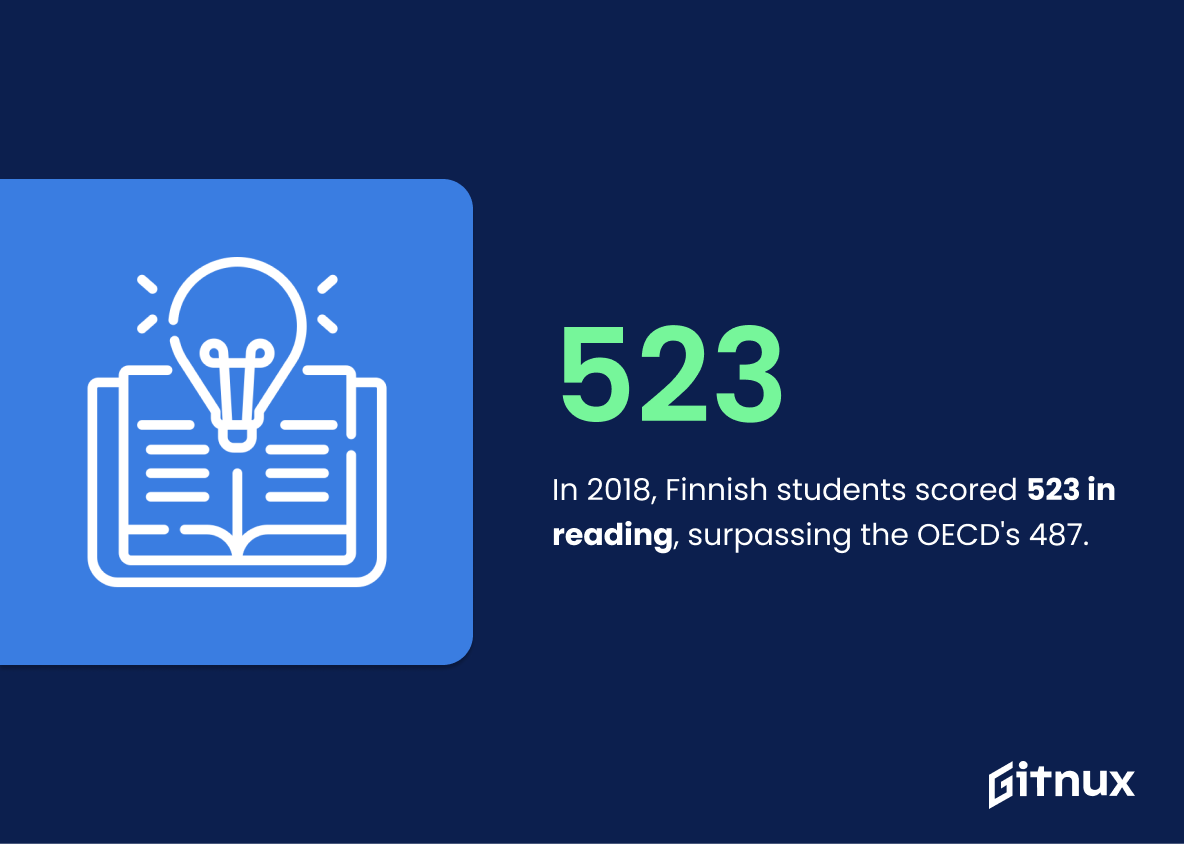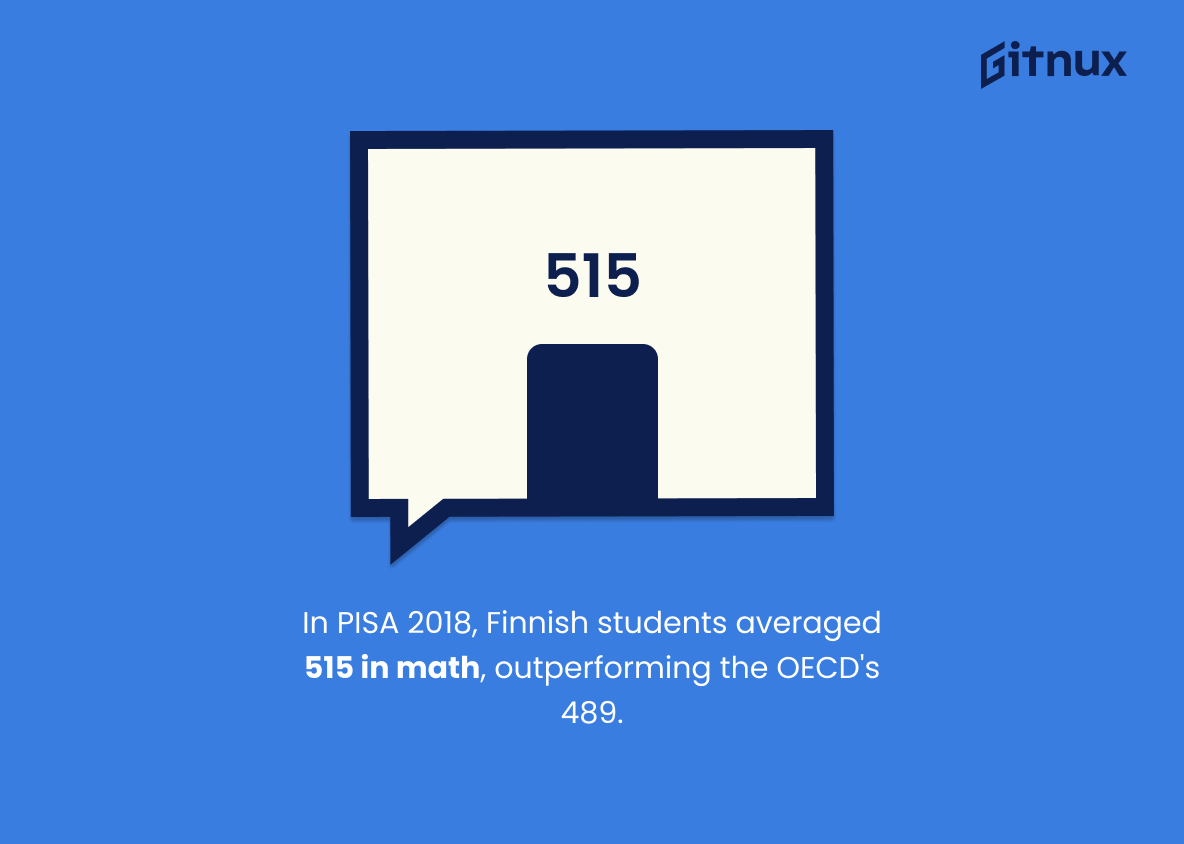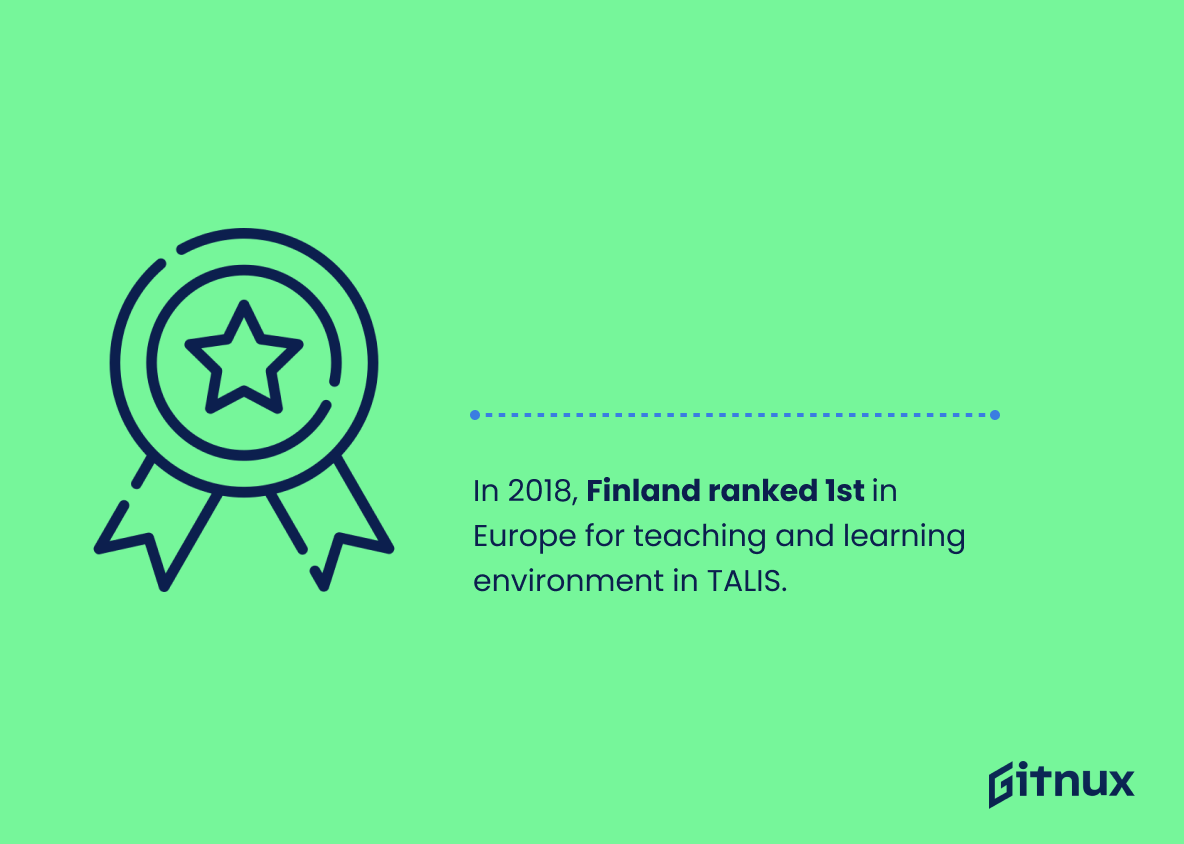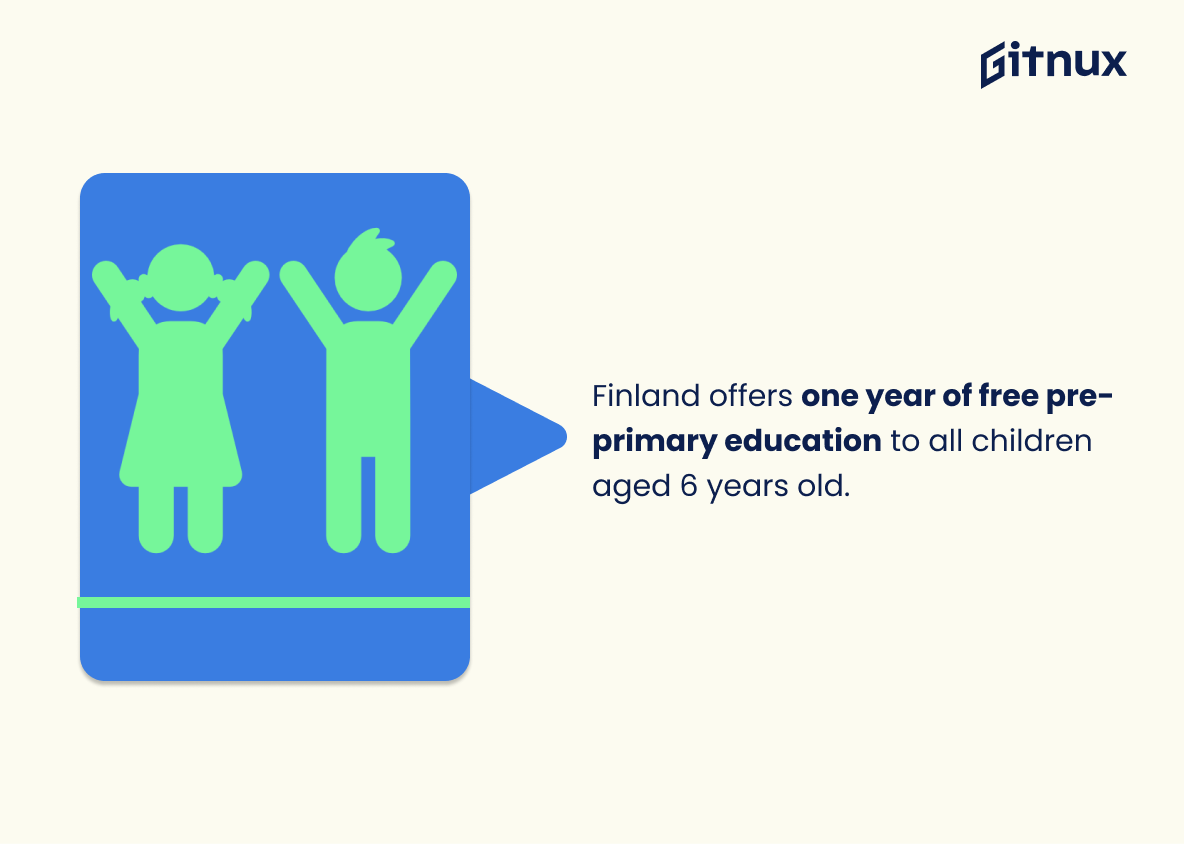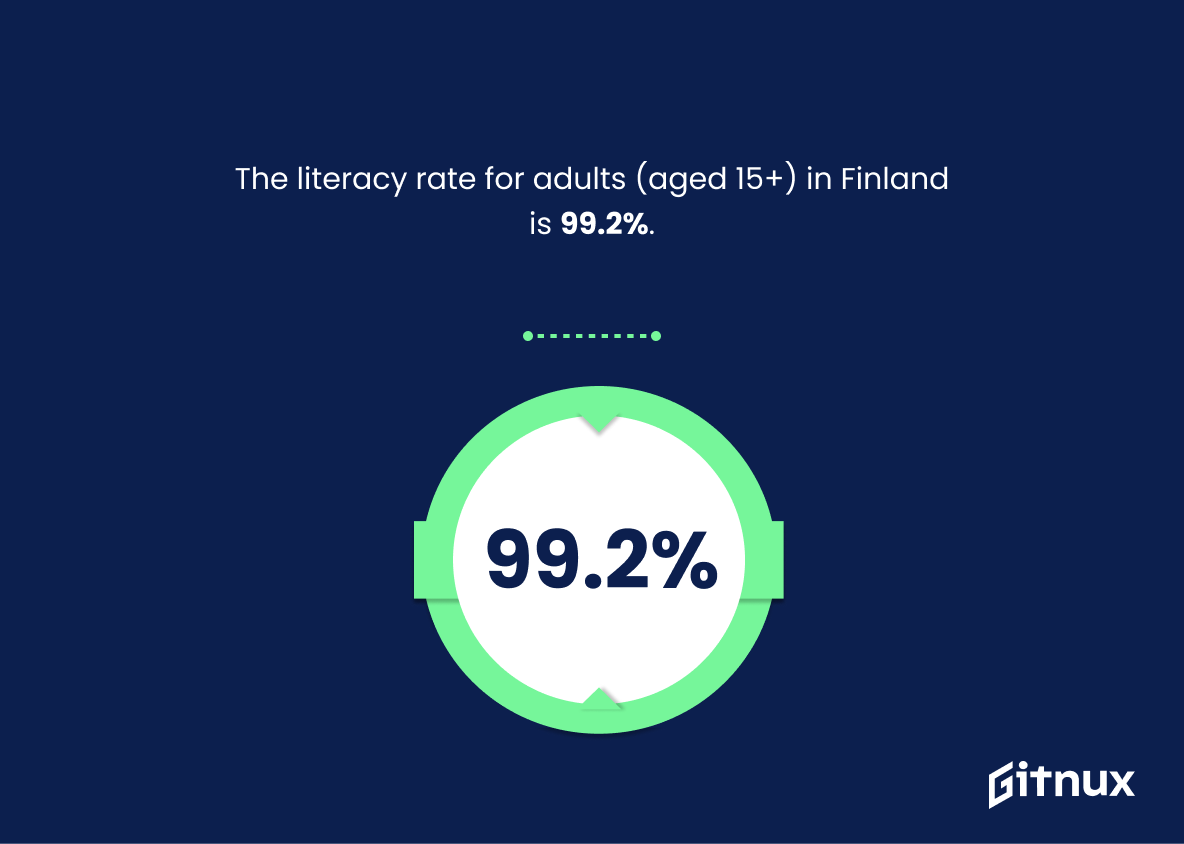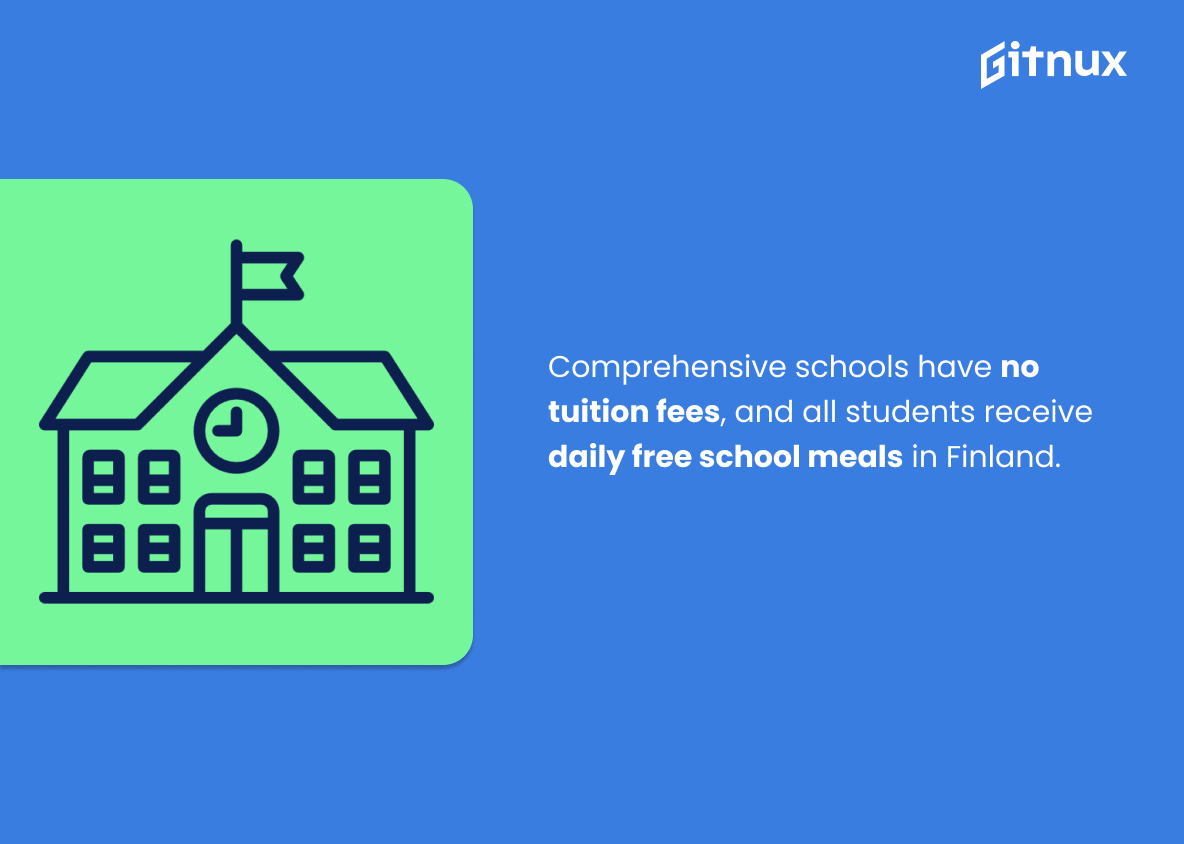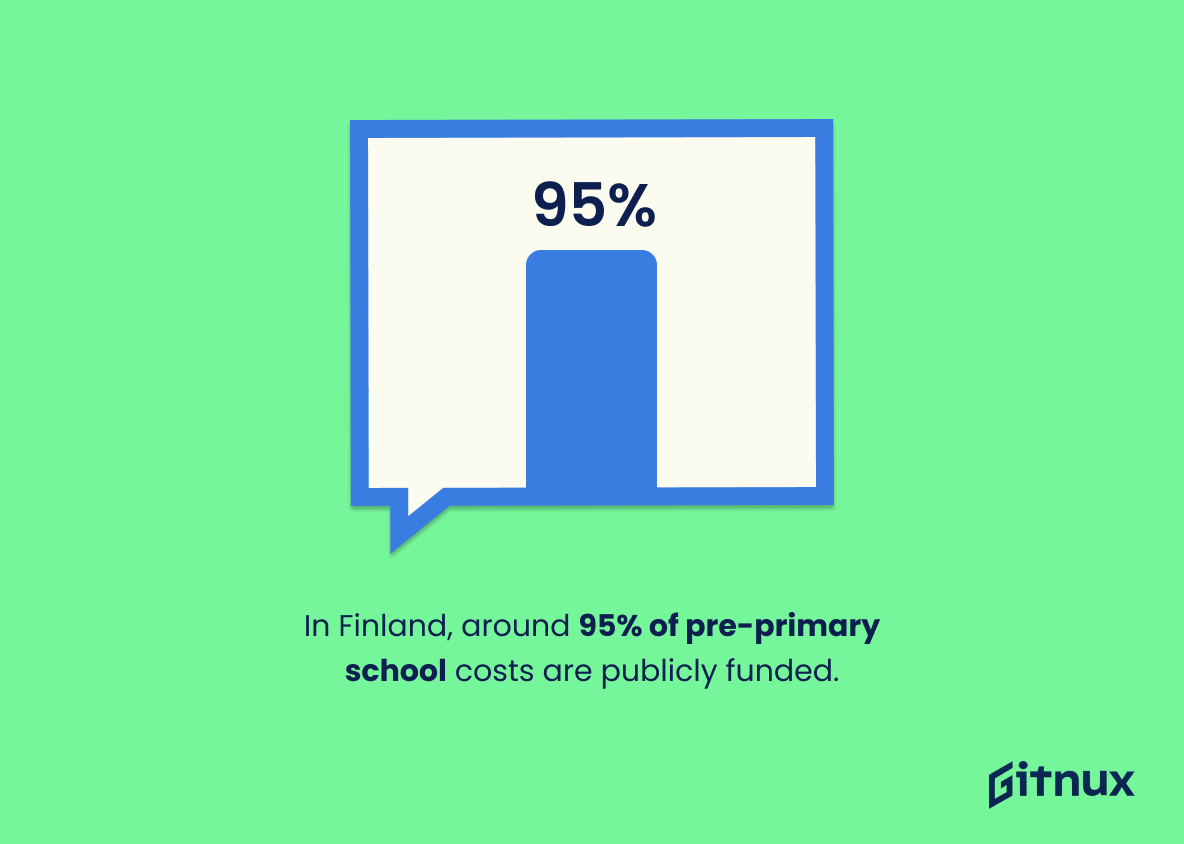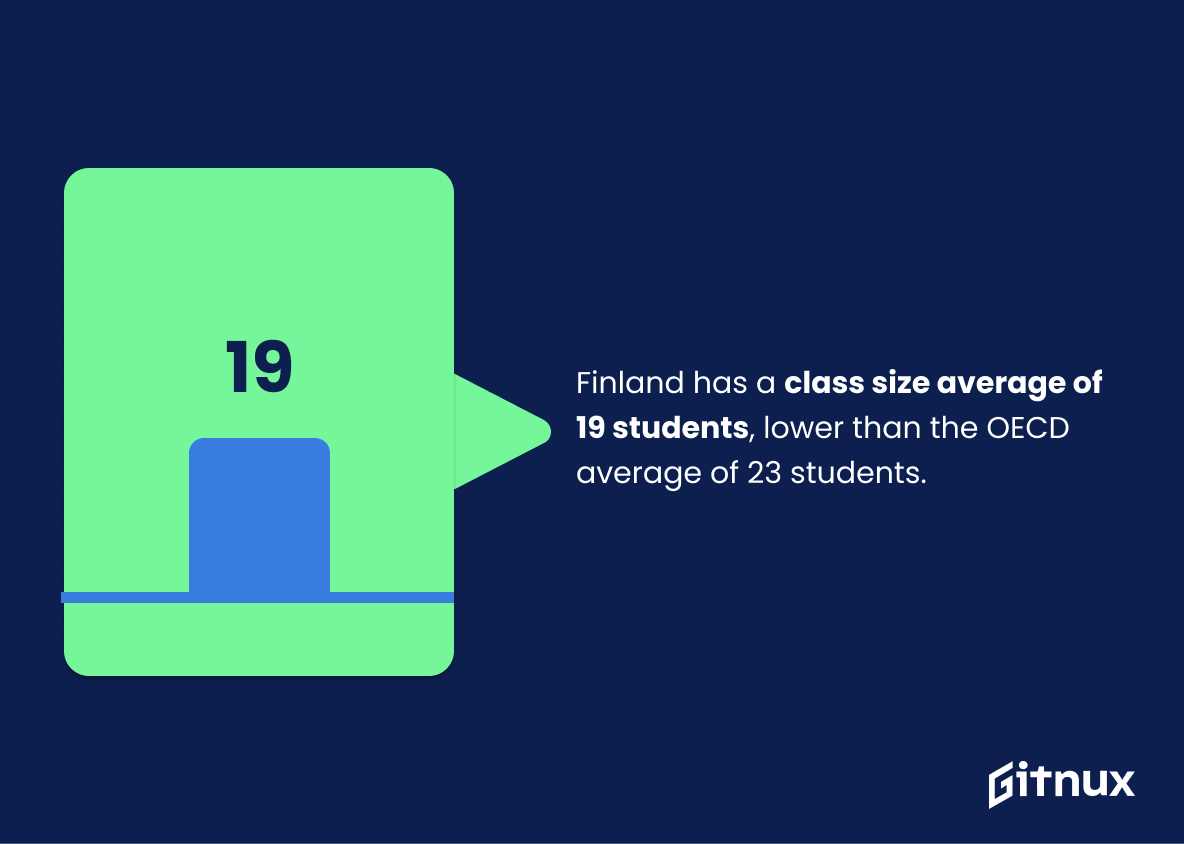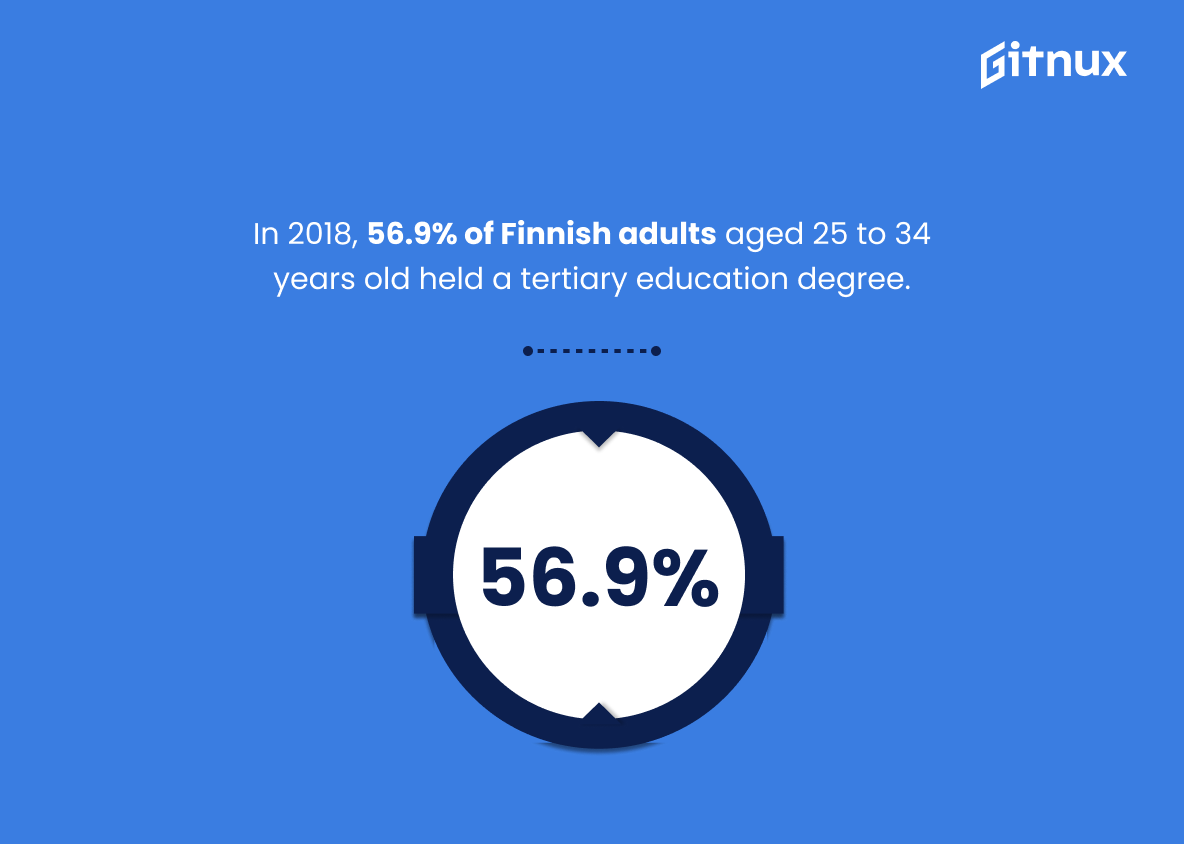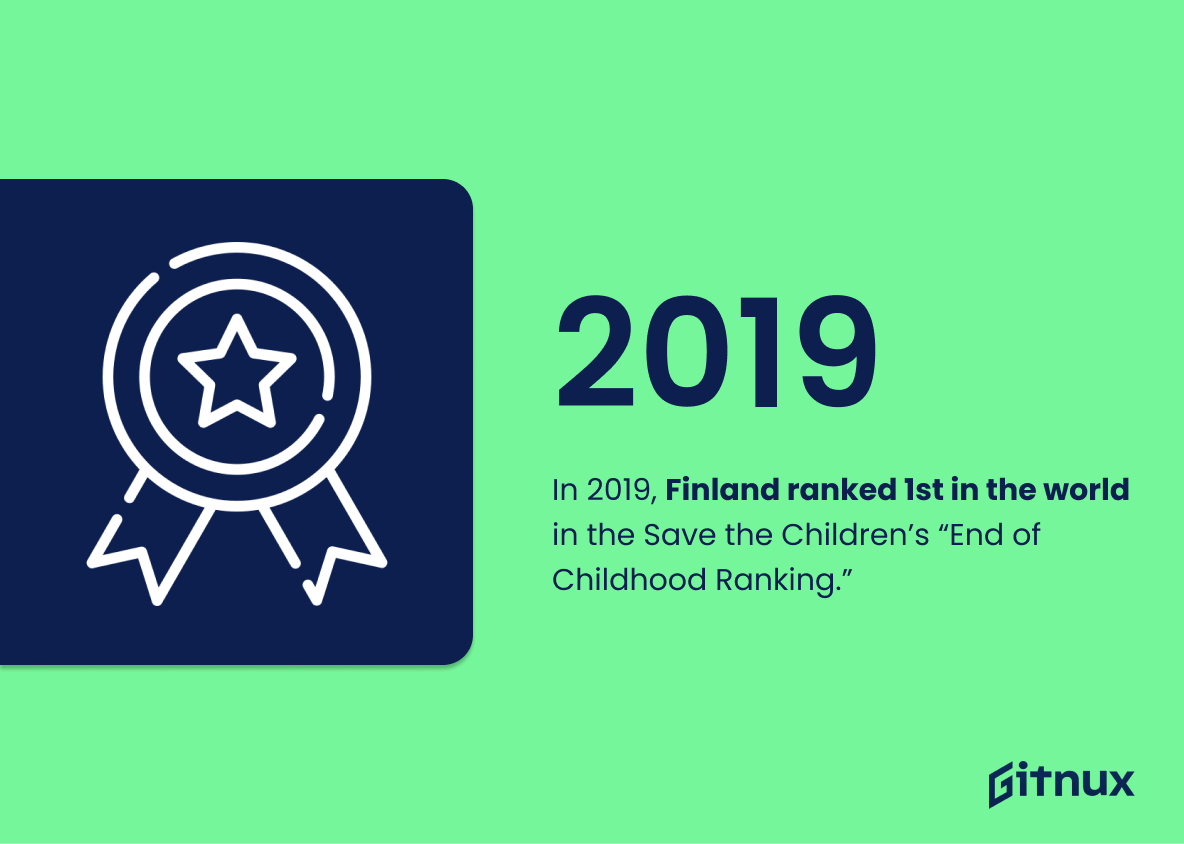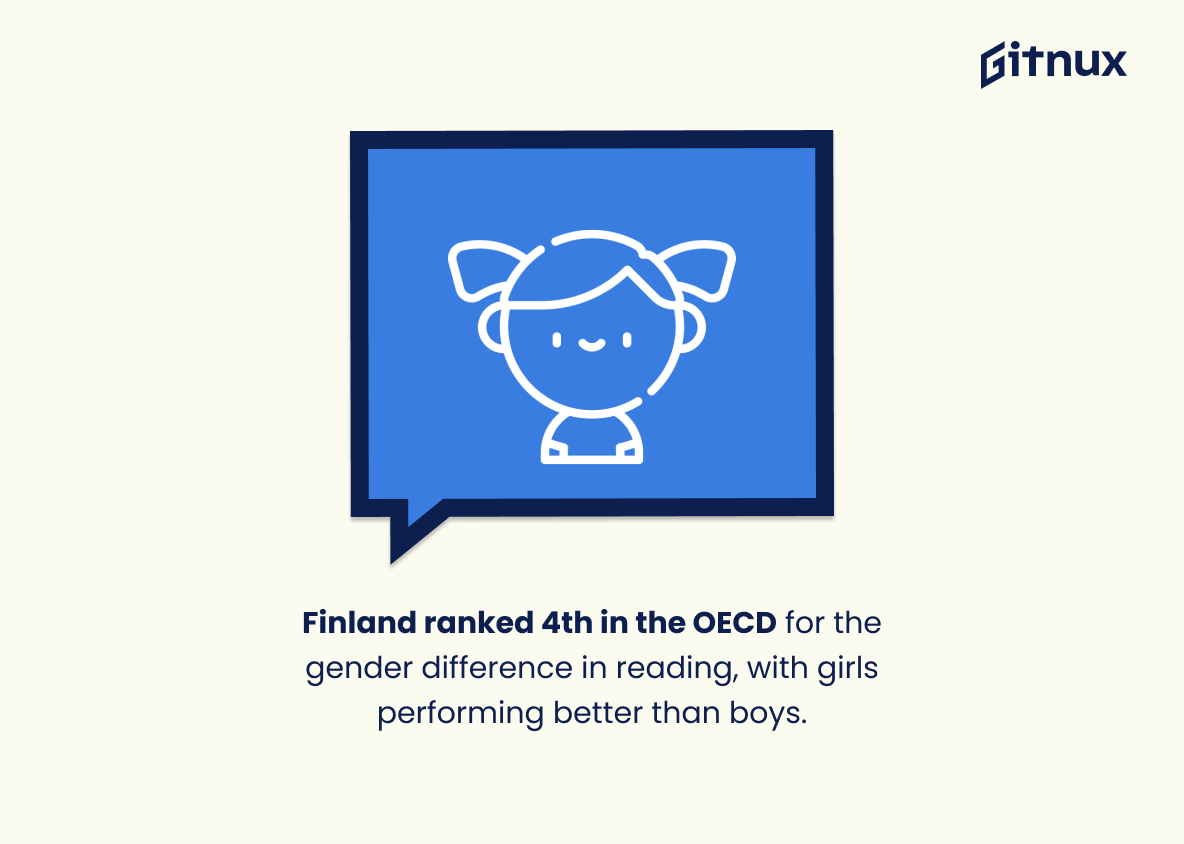Finland is renowned for its high-quality education system, and the statistics prove it. According to the 2020 Worldwide Educating for the Future Index (WEFFI), Finland ranks 1st worldwide in terms of educational quality. The country spends approximately 5.1% of GDP on education, which has resulted in 89.3% of Finnish individuals having at least an upper secondary education as of 2017 – ranking 3rd among OECD countries. In 2018, Finnish students scored an average of 523 points in reading performance and 515 points in mathematics – both exceeding their respective OECD averages by a significant margin.
Furthermore, Finland ranked 1st in Europe according to Teacher and Learning International Survey (TALIS) for best environment for teaching and learning; offers one year free pre-primary school to all children aged 6 years old; 96.8% attend early childhood education; 99.2% literacy rate amongst adults aged 15+; less than 5 % drop out before completing upper secondary school with no tuition fees or daily meals costs involved; 95 % publicly funded pre-primary schools costs ; 94 % vocational training students are apprenticeships based ; 8th rank globally according Times Higher Education World University Rankings ; 90 percent teachers have master’s degree & 19 student class size average lower than 23 student OECD average . Lastly , 56 .9 percent 25 – 34 age group holds tertiary degrees while 45 percent higher eduction enrolment were female & first place End Of Childhood Ranking 2019 Save Children’s report respectively .
Finland’s ranking of 1st in the 2020 Worldwide Educating for the Future Index (WEFFI) is a testament to the country’s commitment to providing its citizens with a world-class education. This impressive achievement is a reflection of Finland’s dedication to investing in its educational system and its students, and serves as a shining example of what can be accomplished when a nation prioritizes education. This statistic is a powerful reminder of the importance of investing in education and the potential for success that can be achieved when a nation puts its students first.
Finland spends approximately 5.1% of GDP on education.
The fact that Finland spends 5.1% of its GDP on education is a testament to the country’s commitment to providing quality education to its citizens. This statistic is indicative of the importance that Finland places on education, and it serves as a reminder of the value that the country places on the development of its citizens. It is also a reflection of the country’s dedication to investing in its future, as a well-educated population is essential for a prosperous and successful nation.
Finland Education Statistics Overview
In 2018, Finnish students scored an average of 523 points in reading performance, exceeding the OECD average of 487 points.
This statistic is a testament to the success of Finland’s educational system, demonstrating that Finnish students are performing above the OECD average in reading performance. It is a clear indication that Finland is providing its students with the resources and support they need to excel in their studies. This is an impressive achievement and one that should be celebrated.
Finnish students scored an average of 515 points in mathematics in the PISA 2018 assessment, above the OECD average of 489 points.
This statistic is a testament to the success of Finland’s educational system, highlighting the fact that Finnish students are performing above the OECD average in mathematics. It is a clear indication that Finland is providing its students with the necessary tools to excel in the subject, and is a reflection of the country’s commitment to providing quality education.
In 2018, Finland ranked 1st in Europe for the best environment for teaching and learning, according to Teacher and Learning International Survey (TALIS).
This statistic is a testament to Finland’s commitment to providing an optimal learning environment for its students. It speaks to the country’s dedication to fostering a culture of education and excellence, and serves as a reminder of the importance of investing in the future of its youth. By ranking first in Europe for the best environment for teaching and learning, Finland is setting a high standard for other countries to strive for.
Finland offers one year of free pre-primary education to all children aged 6 years old.
This statistic is a testament to Finland’s commitment to providing quality education to all children, regardless of their background. By offering free pre-primary education to all 6-year-olds, Finland is ensuring that all children have access to the same educational opportunities, giving them the best chance to succeed in life.
The literacy rate for adults (aged 15+) in Finland is 99.2%.
The literacy rate for adults in Finland is a testament to the country’s commitment to education. It is a reflection of the dedication of the Finnish people to ensure that their citizens are well-equipped with the skills and knowledge necessary to succeed in the modern world. This impressive statistic is a shining example of the success of Finland’s educational system and serves as a reminder of the importance of investing in education.
Comprehensive schools have no tuition fees, and all students receive daily free school meals in Finland.
This statistic is a testament to the commitment of Finland to providing quality education to all its citizens, regardless of their financial situation. By offering free tuition and daily meals, Finland is ensuring that all students have access to the same educational opportunities, regardless of their family’s financial situation. This is a powerful statement of the importance of education in Finland, and it is a key factor in why Finland consistently ranks among the top countries in the world for educational outcomes.
In Finland, around 95% of pre-primary school costs are publicly funded.
This statistic is a testament to Finland’s commitment to providing quality education to its citizens. It demonstrates that the country is willing to invest in its youth, ensuring that they have access to the resources they need to succeed. This investment in pre-primary education is a key factor in Finland’s success in the education sector, and is a major contributor to the country’s high literacy rate and overall educational attainment.
Approximately 94% of Finland’s vocational education and training (VET) students are in work-based apprenticeships.
This statistic is a testament to the success of Finland’s vocational education and training system, which has enabled nearly all of its VET students to gain meaningful employment through apprenticeships. It speaks to the effectiveness of the country’s educational system in preparing its students for the workforce and providing them with the skills and knowledge necessary to succeed in their chosen fields.
Finland has a class size average of 19 students, lower than the OECD average of 23 students.
This statistic is indicative of the commitment Finland has to providing quality education to its students. With a class size average of 19 students, Finland is able to ensure that each student receives the individual attention they need to succeed. This is especially important in comparison to the OECD average of 23 students, which can make it difficult for teachers to provide the same level of support.
In 2018, 56.9% of Finnish adults aged 25 to 34 years old held a tertiary education degree.
This statistic is a testament to the high educational standards in Finland, as it shows that the majority of adults aged 25 to 34 have achieved a tertiary education degree. It is indicative of the commitment to education that is present in Finland, and serves as a reminder of the importance of investing in education for the future.
In 2019, Finland ranked 1st in the world in the Save the Children’s “End of Childhood Ranking.”
This statistic is a testament to Finland’s commitment to providing a safe and nurturing environment for children to grow and learn. It speaks to the country’s dedication to ensuring that all children have access to quality education and the resources they need to thrive. This is a powerful indicator of the success of Finland’s education system and its ability to provide a strong foundation for the future of its citizens.
Finland ranked 4th in the OECD for the gender difference in reading, with girls performing better than boys.
This statistic is a testament to Finland’s commitment to gender equality in education. It shows that the country is making strides in closing the gender gap in reading, with girls performing better than boys. This is an important indicator of the progress Finland is making in providing equal educational opportunities for both genders. It is also a sign that Finland is taking steps to ensure that all students have the same access to quality education, regardless of gender.
Conclusion
Finland has a long-standing reputation for excellence in education, and the statistics presented here demonstrate why. Finland ranks 1st worldwide in the 2020 Worldwide Educating for the Future Index (WEFFI), spends approximately 5.1% of GDP on education, and 89.3% of Finnish individuals have at least an upper secondary education – ranking 3rd among OECD countries. In 2018, Finnish students scored an average of 523 points in reading performance and 515 points in mathematics – both exceeding their respective OECD averages by significant margins. Furthermore, Finland offers one year of free pre-primary education to all children aged 6 years old; 96.8% attend early childhood education as well as 99.2% literacy rate amongst adults (aged 15+). Less than 5% drop out before completing upper secondary school with comprehensive schools having no tuition fees or daily meals costs covered by public funding sources such as taxes or grants from government agencies/organizations etc.. Additionally 94 % are enrolled into work based apprenticeships through vocational training programs while 56 .9 % hold tertiary degrees making it rank 8th globally according to Times Higher Education World University Rankings & 4th within OECD nations respectively when considering gender differences between boys & girls performances across various subjects like reading where girls outperform boys significantly Lastly 45 % female enrollment is seen within higher educational institutions which further strengthens its position towards providing quality learning opportunities regardless of gender identity thus placing itself first overall under Save The Children’s “End Of Childhood Ranking” report published back 2019 All these facts combined make it clear that Finland takes great pride not only investing heavily but also delivering results when it comes to educating its citizens
References
0. – https://www.oecd.org
1. – https://www.savethechildren.org
2. – https://www.pxhopea2.stat.fi
3. – https://www.minedu.fi
4. – https://www.unicef-irc.org
5. – https://www.stats.oecd.org
6. – https://www.oamk.fi
7. – https://www.data.oecd.org
8. – https://www.ourworldindata.org
9. – https://www.yidanprize.org
